













Time Life Books World War II “The War in the Desert”.
NOTE: We have 75,000 books in our library, almost 10,000 different titles. Odds are we have other copies of this same title in varying conditions, some less expensive, some better condition. We might also have different editions as well (some paperback, some hardcover, oftentimes international editions). If you don’t see what you want, please contact us and ask. We’re happy to send you a summary of the differing conditions and prices we may have for the same title.
DESCRIPTION: Hardcover: 208 pages. Publisher: Time-Life Books Inc; (1979). Size: 11¼ x 9¼ inches; 2¼ pounds.
CONDITION: Light shelf wear, otherwise in Very Good to Like New condition. Seemingly never read, at worst flipped through a few times. Pages are pristine; clean, unmarked, unmutilated, tightly bound. Satisfaction unconditionally guaranteed. In stock, ready to ship. No disappointments, no excuses. PROMPT SHIPPING! HEAVILY PADDED, DAMAGE-FREE PACKAGING!
PLEASE SEE IMAGES BELOW FOR JACKET DESCRIPTION(S) AND FOR PAGES OF PICTURES FROM INSIDE OF BOOK.
The World War II series was produced in the period of the mid 1970’s through the early 1980’s, and is widely considered to be one of the best photo-documentary/histories of World War II. Each volume undertakes to describe the major events that happened in one specific time period and/or in relation to one specific theme in the history of the world’s greatest armed conflict. The volumes are richly illustrated and the photos are simply stunning – a collection of the greatest photos taken during this conflict. This is as close as you can be to actually having been there.
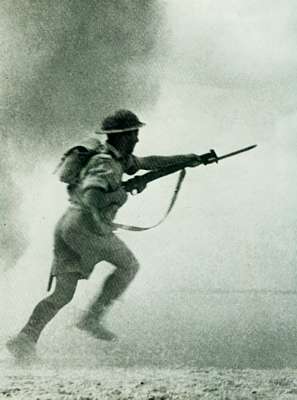
If you could have just one book (or series of books) to introduce the history of World War II, this would have to be it. The overviews are concise and well-written. Together with the illustration and pictures they impart a thorough and concise history of the particular thematic subject matter. Done in a style so wonderfully characteristic of Time-Life’s publications, these are over-sized “coffee table” type books full of impressive imagery. But don’t get the impression that these volumes are “fluff”. While a particular volume might not quite take the place as a university degree, the material is well-written, informative, and immensely intellectually gratifying, overview though it might be. This particular volume is entitled, “The War in the Desert”. The topics covered include:
CHAPTER ONE: “A Gamble for High Stakes“. (Mussolini gambles on a grand scale. A reluctant warrior’s stalling tactics. The deceptive lull at Sidi Braani. Perils of a parched terrain. A sideswipe at Italy’s Naval battle fleet. Portents of trouble from Greece. Churchill versus his own general. A sudden British drive to victory. Hitler decides to intervene. The Duke of Aosta, Cousin of King Emmanuel III: The Royal Duke’s East African Debacle. Map of he North African Theater: 2,000 miles from El Alamein to Casablanca in Morocco (Algeria, Tunisia, Safi, Rabat, Atlas Mountains, Oran, Tangier, Gibraltar, Philippeville, Constantine, Bone, Tebessa, Tunis, Bizerte, Kasserine, Mareth, Tripoli, Sirte, Tripolitania, El Agheila, Soluch, Benghazi, Derna, Cyrenaica, Tobruk, Bardia, Bir Hachiueim, Sollum, Sidi Barrani, Mersa Matruh, Qattara Depression, Alexandria, Cairo, Port Said, Suez Canal). Italo Balbo receiving his military pilot’s wings from Il Duce in 1927. A Savio-Marchett Seaplane: a 43-Day Round Trip Air Journey to Chicago. Balbo and King Victor Emmanuel III reviewing troops in Libya in 1938. A Magnificent Flier’s Fall from Grace: Wreckage of the Flier’s Plane Mysteriously Downed by Italian Antiaircraft Fire. Fort Capuzzo to Sidi Barrani: The Italians Advance, Retreat, and the Nibeiwa-Rabia Gap (a map; Gulf of Sidra, El Agheila, Beda Fomm, Benghazi, Cyrene, Derna, Mechili, Tobruk, Cyrenaica, Halfaya Pass, Bardia, Sollum, Buq Buq, Sofafi, Rabia, Maktila, Tummar East, Tummar West, Nibeiwa, Mersa Mtaruh). Tonruk falls to Australian Forces using captured Italian tanks on January 22, 1941. Lieutenant General Richard O’Conner and General Sir Archibald Wavell engineer the fall of the Italian stronghold of Bardia.)
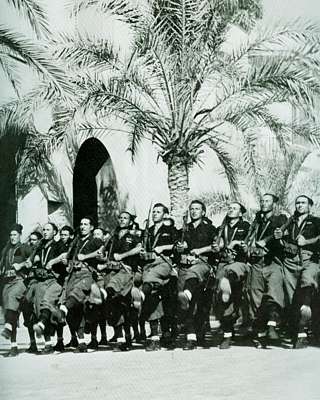
CHAPTER TWO: “Rommel’s Stunning Blow”. (A German master of audacity and deception. British defenses stripped to the bone. An attack by a cardboard division. A German bid for all Cyrenaica. An ignominious British retreat. The Axis bags a treasure in British brass. The Desert Fox: a legend in the making. Embattled and battered Tobruk. Britain’s dull-bladed “battleaxe”. A form Axis stand at a critical pass. Churchill summons a new commander. The Desert Fox as a Camera Buff: Snapping a camouflaged 150mm gun alongside his Leica; on his first reconnaissance flight over the Libyan Desert observing an Italian anti-tank ditch; the escarpment separating Tripoli’s coastal plain from the Libyan Plateau. German dummy tanks built of wood and canvas. Driving the British out of Libya: Rommel’s first offensive from Mersa Brega; a map; Zuetina, Agedabia, Maaten el Grara, Ben Gania, Antelat, Msus, Beda Fomm, Benghazi, Barce. Derna, Charruba, Tmimi, Mechili, Tengender, Ben Gania, Tobruk, Fort Capuzzo, Sidi Azeiz, Bardia, Sollum, Sidi Omar, Sidi Suleiman, Hafid Range, Halfaya Pass. The British “Rats of Tobruk”: a kitchen in a cave (protection from diving Stuka bombers); bathing in an abandoned bath tub.)
CHAPTER THREE: “Triumph Eludes the British.” (A crusade to trap a fox. Grim encounter on the Sunday of the dead. Rommel retraces his Cyrenaican footsteps. Battle for the British boxes. A gallant stand by the Free French. The Eighth Army’s flight into Egypt. Time runs out on the Rats of Tobruk. Cairo under the German threat. Auchlinleck draws the line at El Alamein. Churchill pins his hopes on two new leaders. Britain’s Crusader Offensive of November 1941 (a map: El Agheila, Agedabia, Beda Fomm, Benghazi, Gazala, Bir Hacheim, Tobruk, Sidi Rezegh, Bir el Gubi, Gabr Saleh, Fort Maddalena, Sidi Omar, Halfaya Pass, Bardia, Sollum, Mersa Matruk. General Sir Clauda Auchinleck, the Crusader Offensive and Indian Mechanized troops. Italian Underwater Raiders and midget sub frogmen. French infantrymen near Bir Hacheim in June, 1942, in the defense of Tobruk. German gunners position 88mm artillery during the siege of Tobruk.)
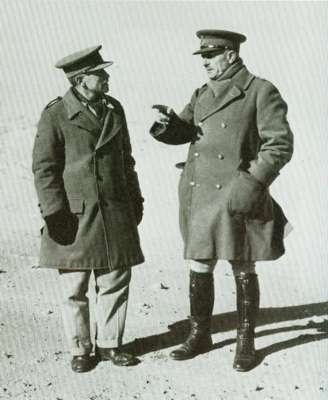
CHAPTER FOUR: “The Crucible of Victory.” (Montgomery to the rescue. Lessons in fighting for a battle-tested army. An elaborate hoax to mislead the Axis. A murderous British barrage. A pathway through half a million Axis mines. Monty’s “Supercharge” breaks a bloody stalemate. An impossible order from the Fuhrer. Retreat to the west for the Axis. British Prime Minister touring the Egyptian desert near El Alamein in August 1942. The British Eighth Army’s Intrepid Desert Commandos: The “Long Range Desert Group” and the “Special Air Service”. The Battle of El Alamein, October 23, 1942 (a map): Sidi Abd Rahman, Rahman Track, Miteirya Ridge, Alam el Halfa Ridge. Survival of the Fittest in Armored Warfare: The unreliable Italian M13/40, the “mobile coffin”; The 30-ton British Matilda; the Grant Tank; The Panzer III; the 25 ton Panzer IV; the 36-ton M4 Sherman Tank.)
CHAPTER FIVE: “An Ally Joins the War“. (Testing-time for a mighty armada. Hitler makes a wrong guess. A blistering response from the French. Roosevelt’s secret messenger. A French admiral hedges his bets. Americans join the North African war. An unfinished battleship in a dockside duel. General Patton’s toast to a free France. Allies and Axis race for Tunisia. Gunners aboard the U.S.S. Augusta duels with the French Battleship Jean Bart in Casablanca during “Operation Torch”. Casablanca’s Hotel Miramar (Patton’s Headquarters): GI’s in combat fatigues mingle with Moroccans dressed in djellabahs. Paying the price for cooperation with the Allies: the murder and funeral of French Admiral Jean Francois Darlan. High-Level Matchmaking at Casablanca: Roosevelt, Churchill, General Henri Giraud (High Commissioner of French North Africa) and leader of the Free French, General Charles de Gaulle.)
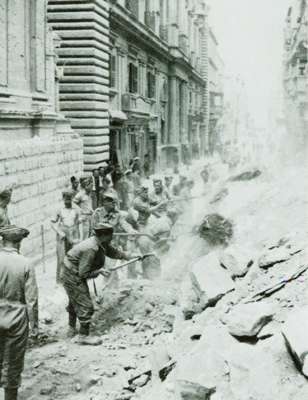
CHAPTER SIX: “Americans Taste the Fire“. (Eisenhower worries about green American troops. A sudden Axis lunge to the west. GI castaways on islands of resistance. The Allies’ desperate defense of Kasserine Pass. The Desert Fox hesitates, then withdraws, A new flamboyant commander for American troops. U.S. Rangers on a daring raid. Montgomery scores with his strong “left hook”. A symbolic meeting of two Allied armies. Bagpipers herald the crossing of the Libyan border into Tunisia leading the Eighth Army’s (Gordon) Highland Division across the desert sand. General Sir Harold Alexander, Commander Allied Ground Forces in North Africa in a final offensive against Rommel’s forces. Mountainous Tunisia: The last North African stronghold of the Axis (map): Tabarka, Bizerte, Mateur, Tunis, Hamman Lif, Cape Bon, Hammamet, Enfidavit, Pont du Fahs, Medjez al Bab, Hill 609, Longstop Hill, Tine River, Thala, Tebessa, Feriana, Kasserine, Sbeitla, Sidi Bou Zid, Faid Pass, Maknassy, El Guettar, Gafsa, Sfax, Medenine, Mareth Line, Tebaga Gap, El Hamma, Gabes, Wadi Akarit, Disarming the Deadly Mementos of a Retreating Army. A turbaned Sikh gingerly defusing a mine. Sappers scanning a minefield with metal detectors. Sappers of the 4th Indian Division of the Eighth Army probing with bayonets for wooden or plastic mines.)
CHAPTER SEVEN: “The Knockout Punch“. (A gloomy assessment of Axis chances. Preparing for a last-ditch stand. Jostling for position among the Allies. The high cost of taking the high ground. An American division regains its honor. “Strike”: a plan for the last big push. A torrential rain of Allied bombs. Dashing for Tunis and Bizerte. Germans caught with their faces lathered. Dignified surrender of a proud army. Hill 609, an Axis stronghold: British Lieutenant General Kenneth Anderson and U.S. Major General Omar Bradley. An 80 mile procession of surrendering Axis troops: a victorious Montgomery consulting with captured Italian Marshal Giovanni Messe and German Major General Frecken regarding assembly points for thousands of Axis prisoners.)
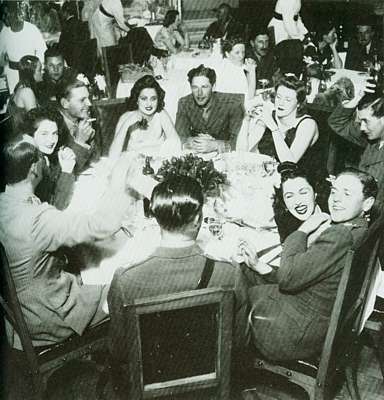
PICTURE ESSAY ONE: “Italy’s Reach for Glory“. (A smartly uniformed Italian antiaircraft crew in Libya, September 1940. The Duce’s Plan for a Roman Empire. Mussolini’s Office in Rome’s Palazzo Venezia. A billboard map illustrating Italy’s successes in North Africa. Italian Blackshirts in Benghazi, Libya on August 14, 1940, reviewed by Marshal Rodolio Graziani. Setting forth on the road to disaster: sun-helmeted Italian foot soldiers trudging across the desert; a phalanx of Lancia trucks with Italian artillerymen, lead by an officer in a Fiat convertible. Sidi Barrani and Bardia, Italian Infantrymen charging British positions, December, 1940. The Fall of Bardia and 80,000 Italian prisoners-of-war.) PICTURE ESSAY TWO: “The Desert Fox“. (Lieutenant General Erwin Rommel leading panzer troops through the North African desert. A legendary soldier with a sixth sense. Rommel’s official portrait by Hitler’s chief photographer Heinrich Hoffmann: Rommel holding the Field Marshal’s Baton awarded by Hitler in September, 1942. A portrait of Lieutenant Rommel, circa 1912, instructor of Army recruits. A portrait of Rommel and his siblings, circa 1910. Quiet Moments on the Rise to Fame: Rommel’s book on infantry tactics. A portrait of newly decorated Rommel and his Wife, Lucie, in 1917. Rommel and his wife Lucie at home in Wiener Neustadt, on leave from WWII campaigning. The Ghost Division Stalks Northern Europe: Hitler Gifts Rommel the Seventh Panzer Division, France, 1940. From Victory in France to Palm-Studded Sands: Germany’s Afrika Corps in Tripoli. A Motorized Procession in Tripoli with the Italian Commander of Italian Forces in North Africa, General Italo Gariboldi. Rommel reviewing troops in Sollum, 1941. Rommel pushing a staff car stuck in desert sand. Rommel personally flying desert reconnaissance missions. Rommel during the siege of Tobruk, 1942.)

PICTURE ESSAY THREE: “Hell’s Own Background“. (An Italian Command Post near Sidi Barrani in a howling desert wind storm. A German forward observer using a periscopic instrument to adjust artillery fire. Afrika Corps troops wearing sand goggles. A Stinging Menace Borne by the Wind: A Sandstorm (90 mile an hour hot winds known as “Khamsin” in Arabic, or “Ghibli” in German) near El Alamein in September, 1942. Making Do in a Land of Extremes: Using gasoline and sand to wash clothes; striping naked for a bath in a cistern. Wearing head nets for protection from swarms of flies. Surviving the desert’s chilling night airs: sleeping in slit trenches for warmth. Frying eggs for breakfast on the sun-heated hull of a tank.)
PICTURE ESSAY FOUR: “Embattled Malta“. (Malta’s Capital of Valletta enduring the Spring Blitz of 1942. Heroic Ordeal of a Rock-Bound Island. Bomb shelters carved into limestone caves. The bombed out Governor’s Palace in central Valetta’s “Queen’s Square”. Maltese children playing in the burned out wreckage of a German Stuka Dive Bomber. Soldiers with shovels clearing rubble from Kingsway, Valletta’s main thoroughfare. The ruins of Valletta’s Royal Opera House, one of 37,000 buildings destroyed or damaged. Malta’s Triumph and King George VI’s victory motorcade of June 20, 1943.)
PICTURE ESSAY FIVE: “Light Relief in Cairo“. (British officers relaxing on the terrace of Cairo’s Shepheard’s Hotel. South African soldiers on a camelback tour of Cheops Pyramid. A Social Whirl Untroubled by War: Cairo Nightlife and dancing at the roof garden of the Continental Hotel. Hekmet, the Melody Club’s Belly Dancer. An amputee Free French Soldier at the Shepheard’s Hotel. Unclaimed trunks and bags in the Shepheard’s Hotel storeroom.)
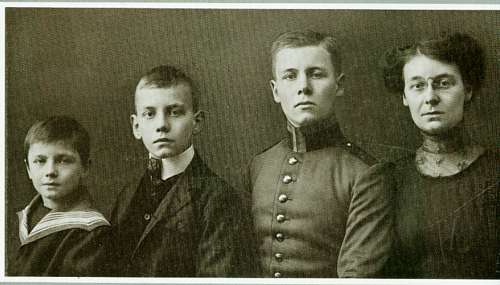
PICTURE ESSAY SIX: “A Brutal Pounding of the Axis“. (A 900-gun British Barrage of Axis positions at El Alamein. Bloody El Alamain: The Turning Point. Hand-to-hand combat with tough Australian infantrymen. A LINE OF British Crusader Tanks hounding Rommel’s retreat westward from El Alamein across Egypt and Libya. British soldiers using an abandoned German tank for cover from shellfire. British Soldiers of the Middlesex Regiment under an Axis artillery barrage. A near-miss on a British heavy tank advancing on Axis positions at El Alamein. Limping Away to Safety in the Hills to the West. Australian troops helping a wounded German soldier. A German Casualty: German soldiers carrying a stretched with one of an estimated 25,000 German casualties (10,000 dead, 15,000 wounded) at the Battle of El Alamein. A 40 mile traffic jam: a bomber’s-eye view of the Egyptian coastal road chocked with German and Italian mechanized vehicles fleeing El Alamein. Discarded clothing and abandoned vehicles marking the frenzied Axis retreat from El Alamein. A bicycle-mounted German soldier killed by a British sniper laying along the coastal road outside El Alamein.)
PICTURE ESSAY SEVEN: “Monty at the Helm“. (Lieutenant General Montgomery discussing tactics with his staff on August 15, 1942, the occasion of his first encounter with Rommel’s forces. A Man to Turn the Tide. Photo of Montgomery at age 14 shooting rabbits in Tasmania. Montgomery in his trademark black beret leaning against an American-made Grant tank. Montgomery on horseback as a cadet at the Royal Military College at Sandhurst. Brigade-Major Montgomery tours the trenches in France near the Arras front in 1916. Major Montgomery at age 39 marries Betty Carver. Montgomery as a widowed father poses with his son, David, in 1941. Monty taking tea with the tank men of the 6th Royal Tank Regiment. Monty congratulating New Zealand and English armored troops after Rommel’s abandonment of the Mareth Line in Southern Tunisia. Montgomery dines with the (captured) Commander of Afrika Korps, General Riter von Thoma, on the final day of fighting at El Alamein. Montgomery examining the outskirts of Tripoli from the turret of his Grant tank.)
PICTURE ESSAY EIGHT: “Tipping the Balance“. (American Infantrymen coming ashore near the Algerian Port of Oran on November 8, 1942. Torch: A Massive Invasion of Africa. Loading a 1,000 pound bomb onto a U.S. Navy SBD Dive Bomber on the aircraft carrier U.S.S. Ranger. Climbing from a troop transport into an assault boat for the run to Algeria’s shore. A wrecked jeep which slipped from a swamped landing craft: huge waves on the landing beaches of Morocco’s Atlantic coast. Wading ashore: a 2½ ton Army truck disembarks from a landing craft. American Antiaircraft guns on an Algerian beach duel with French Vichy American-made P-36’s. U.S. Assault Infantrymen searching buildings in Algeria. The Enemy that Became a Friend: Vichy French fighting American troops at Oran, Algeria. A General Lee Tank Crew in Tunisia shortly after the Operation Torch landings. The wreckage of a U.S. Army Air Corp camp hit by Axis bombers at Youks les Bains, in Tunisia, in December 1942. )
PICTURE ESSAY NINE: “One Man’s Focus on the War“. (Lieutenant General George S. Patton watching the advance of American tanks at El Guettar. An American M3 light tank probing German defenses at El Guettar. U.S. Signal Corps soldiers stringing telephone lines along a Tunisian road. Combat Photographer “Hellzapoppin” Elisofon. A Two-Fisted Assault on an Entrenched Enemy. U.S. Artilleryman firing a 155mm gun near El Guettar, Tunisia. American tanks driving across the Valley of El Guettar. In Praise of Unsung Heroes. GI’s at a lonely observation post directing artillery fire. U.S. Signal Corpsman tracking down a break in a field telephone wire broken by German fire. A Valley Littered with the Wreckage of War. The charred hulk of a German Panzer IV abandoned at El Guettar. Covering the Aftermath of a Lost Cause. Near a grainfield, wooden crosses mark a common grave for dead German soldiers. Italian soldiers in an Allied POW camp playing cards. An overturned armored vehicle ablaze hours after a battle. A German 150mm gun amongst a vast array of captured enemy weapons. )
PICTURE ESSAY TEN: “Grand Finale in Tunis“. (Rome and Berlin via Tunis: a liberated population of Tunisians. Jubilant Weeks of Victory and Liberation: The official victory review parading past British, French, and American commanders in Tunis. A smiling soldier marching down a boulevard in Tunisia. French and native Tunisians cheering the end of Axis occupation of Tunis. French Tunisians celebrating around a truckful of impassive Gurkha “knife fighters” soldiers of the 4th Indian Division. Tunisian women waving to truckbound Free French soldiers. French civilians riding on a British armored car as it enters Tunis. Mateur, Tunis POW camp with 275,000 German and Italian prisoners.)
I always ship books Media Mail in a padded mailer. This book is shipped FOR FREE via USPS INSURED media mail (“book rate”). All domestic shipments and most international shipments will include free USPS Delivery Confirmation (you might be able to update the status of your shipment on-line at the USPS Web Site and free insurance coverage). A small percentage of international shipments may require an additional fee for tracking and/or delivery confirmation. If you are concerned about a little wear and tear to the book in transit, I would suggest a boxed shipment - it is an extra $1.00. Whether via padded mailer or box, we will give discounts for multiple purchases. International orders are welcome, but shipping costs are substantially higher.
Most international orders cost an additional $9.99 to $37.99 for an insured shipment in a heavily padded mailer, and typically includes some form of rudimentary tracking and/or delivery confirmation (though for some countries, this is only available at additional cost). However this book is too large to qualify for the least expensive postal rates offered by the USPS. So it is slightly more costly to ship internationally. However there is also a discount program which can cut postage costs by 50% to 75% if you’re buying about half-a-dozen books or more (5 kilos+). Rates and available services vary a bit from country to country. You can email or message me for a shipping cost quote, but I assure you they are as reasonable as USPS rates allow, and if it turns out the rate is too high for your pocketbook, we will cancel the sale at your request. ADDITIONAL PURCHASES do receive a VERY LARGE discount, typically about $5 per book (for each additional book after the first) so as to reward you for the economies of combined shipping/insurance costs. Your purchase will ordinarily be shipped within 48 hours of payment. We package as well as anyone in the business, with lots of protective padding and containers.
All of our shipments are sent via insured mail so as to comply with PayPal requirements. We do NOT recommend uninsured shipments, and expressly disclaim any responsibility for the loss of an uninsured shipment. Unfortunately the contents of parcels are easily “lost” or misdelivered by postal employees – even in the USA. That’s why all of our domestic shipments (and most international) shipments include a USPS delivery confirmation tag; or are trackable or traceable, and all shipments (international and domestic) are insured. We do offer U.S. Postal Service Priority Mail, Registered Mail, and Express Mail for both international and domestic shipments, as well United Parcel Service (UPS) and Federal Express (Fed-Ex). Please ask for a rate quotation. We will accept whatever payment method you are most comfortable with. If upon receipt of the item you are disappointed for any reason whatever, I offer a no questions asked return policy. Send it back, I will give you a complete refund of the purchase price (less our original shipping costs).
Most of the items I offer come from the collection of a family friend who was active in the field of Archaeology for over forty years. However many of the items also come from purchases I make in Eastern Europe, India, and from the Levant (Eastern Mediterranean/Near East) from various institutions and dealers. Though I have always had an interest in archaeology, my own academic background was in sociology and cultural anthropology. After my retirement however, I found myself drawn to archaeology as well. Aside from my own personal collection, I have made extensive and frequent additions of my own via purchases on Ebay (of course), as well as many purchases from both dealers and institutions throughout the world - but especially in the Near East and in Eastern Europe. I spend over half of my year out of the United States, and have spent much of my life either in India or Eastern Europe. In fact much of what we generate on Yahoo, Amazon and Ebay goes to support The Hermitage Museum in St. Petersburg, as well as some other worthy institutions in Europe connected with Anthropology and Archaeology.
I acquire some small but interesting collections overseas from time-to-time, and have as well some duplicate items within my own collection which I occasionally decide to part with. Though I have a collection of ancient coins numbering in the tens of thousands, my primary interest is in ancient jewelry. My wife also is an active participant in the "business" of antique and ancient jewelry, and is from Russia. I would be happy to provide you with a certificate/guarantee of authenticity for any item you purchase from me. There is a $2 fee for mailing under separate cover. Whenever I am overseas I have made arrangements for purchases to be shipped out via domestic mail. If I am in the field, you may have to wait for a week or two for a COA to arrive via international air mail. But you can be sure your purchase will arrive properly packaged and promptly - even if I am absent. And when I am in a remote field location with merely a notebook computer, at times I am not able to access my email for a day or two, so be patient, I will always respond to every email. Please see our "ADDITIONAL TERMS OF SALE."

